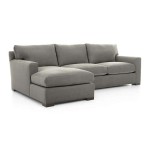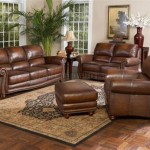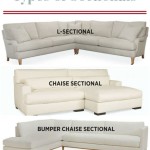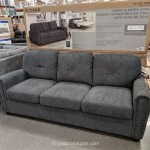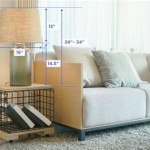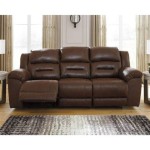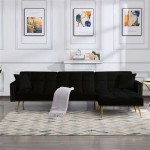How to Craft a Durable and Stylish Hay Bale Sofa
Hay bale sofas offer a rustic and cost-effective seating solution for outdoor spaces. They are particularly well-suited for events, gardens, or patios seeking a unique and comfortable aesthetic. Constructing a hay bale sofa requires careful planning, material selection, and execution to ensure durability, comfort, and visual appeal. This article details the process of building a hay bale sofa, providing step-by-step instructions and crucial considerations for success.
Before embarking on the project, it is imperative to understand the inherent characteristics of hay bales. They are organic materials subject to decomposition, moisture absorption, and insect infestation. Proper preparation and protective measures are vital to prolong the lifespan of the sofa and maintain its structural integrity. The selection of the appropriate type of hay and the implementation of effective weatherproofing techniques are crucial components of the construction process.
Key Point 1: Sourcing and Preparing the Hay Bales
The foundation of a stable and comfortable hay bale sofa lies in the quality and selection of the hay bales themselves. Opt for bales composed of tightly packed, dry hay. This minimizes settling and prevents rapid decomposition. Straw bales are often considered a viable alternative, but it's essential to recognize that they tend to be less dense and may require additional support. Choose bales that are uniform in size and shape to create a level and aesthetically pleasing seating surface.
Specifically, consider the following when sourcing hay bales:
- Type of Hay: Timothy hay, alfalfa, or a blend of grasses are acceptable. Avoid hay containing excessive weeds or mold, as these can contribute to decomposition and attract pests.
- Bale Density: Tightly packed bales provide superior support and resist sagging over time. Inspect the bales for firmness and resistance to compression.
- Bale Size: Standard rectangular bales are typically used for sofa construction. Ensure that the bales are consistent in length, width, and height to create a uniform sofa structure.
- Dryness: The hay must be thoroughly dry to prevent mold growth and decomposition. Inspect the bales for any signs of moisture or dampness.
Prior to assembly, thoroughly inspect each bale for signs of pests, mold, or dampness. If any issues are detected, discard the affected bale. A preventative measure involves treating the bales with a non-toxic insect repellent specifically designed for agricultural use. This helps to deter insects and prevent them from nesting within the hay. Allow the treatment to dry completely before proceeding with the construction.
To create a clean and stable base, placing a layer of gravel or crushed stone beneath the hay bales is highly recommended. This elevates the bales above the ground, preventing direct contact with moisture and reducing the risk of rot. A layer of heavy-duty landscape fabric should be placed between the gravel and the hay bales to further inhibit weed growth and moisture absorption.
Key Point 2: Assembling the Sofa Structure
The assembly of the hay bale sofa involves arranging the bales in a configuration that provides both seating and back support. The most common configuration involves placing two to three bales side-by-side to form the base of the sofa, with additional bales stacked vertically to create the backrest. The exact configuration will depend on the desired length and height of the sofa. It is vital to secure the bales together to prevent them from shifting or collapsing.
Consider these steps when assembling the sofa:
- Layout: Determine the desired dimensions of the sofa and arrange the bales accordingly. Ensure that the base bales are level and aligned properly.
- Securing the Base: Secure the base bales together using ratchet straps or rope. Wrap the straps or rope tightly around the bales, ensuring that they are held firmly in place. For added stability, consider using metal stakes driven into the ground to anchor the bales.
- Building the Backrest: Stack the backrest bales vertically, ensuring that they are aligned with the base bales. Overlap the bales slightly to increase stability. Secure the backrest bales to the base bales using ratchet straps or rope. Focus on securing the top bales to the lower bales.
- Reinforcements: Depending on the desired height of the backrest, additional supports may be required. Wooden planks or metal bars can be used to reinforce the backrest and prevent it from leaning or collapsing. These supports should be securely attached to both the base and backrest bales.
After securing the bales, re-evaluate the structural integrity of the sofa. Address any areas that appear unstable or weak. Reinforce the connections with additional straps or rope as needed. The goal is to create a sofa that is sturdy and capable of withstanding regular use.
To prepare for covering the hay bales, consider adding a layer of batting or padding on top of the bales used for seating and the backrest. This step is optional, but it will significantly increase the comfort of the sofa. Secure the batting or padding to the bales using staples or adhesive.
Key Point 3: Protecting and Covering the Hay Bale Sofa
Protecting the hay bales from the elements is essential to prolonging the lifespan of the sofa. Rain, snow, and sunlight can all contribute to the deterioration of the hay. Covering the sofa with a waterproof and UV-resistant material is crucial. Tarpaulins, outdoor fabrics, or even repurposed billboard vinyl can be used to create a protective barrier.
Follow these steps for effective weatherproofing and covering:
- Waterproofing: Wrap each bale individually with plastic sheeting or a waterproof membrane. This will prevent moisture from penetrating the hay and causing rot. Secure the sheeting with tape or staples.
- UV Protection: Cover the entire sofa with a UV-resistant tarp or fabric. This will protect the hay from the damaging effects of sunlight. Ensure that the cover extends beyond the edges of the sofa to provide complete protection.
- Securing the Cover: Secure the cover to the sofa using bungee cords, rope, or grommets. Ensure that the cover is taut and wrinkle-free to prevent water from pooling on the surface.
- Aesthetic Covering: Once the waterproof and UV-resistant layer is in place, consider adding a decorative fabric cover to enhance the appearance of the sofa. Outdoor-rated fabrics are ideal for this purpose, as they are durable, water-resistant, and available in a wide range of colors and patterns.
Select a fabric that is both visually appealing and durable. Consider the overall aesthetic of the outdoor space and choose a fabric that complements the existing décor. Canvas, denim, or outdoor-specific upholstery fabrics are suitable choices. Measure the sofa carefully and cut the fabric to size, allowing for ample overlap. Sew the fabric together to create a fitted cover for the sofa. Secure the cover to the sofa using ties, buttons, or Velcro.
For added protection and comfort, consider adding cushions and pillows to the sofa. These will provide extra padding and support, making the sofa more comfortable to sit on. Choose outdoor-rated cushions and pillows that are resistant to water, mildew, and fading. Arrange the cushions and pillows strategically to create a comfortable and inviting seating area.
Regular maintenance is essential to keeping the hay bale sofa in good condition. Inspect the sofa regularly for signs of wear and tear. Repair any damage promptly to prevent further deterioration. Clean the sofa regularly with a mild soap and water solution. Remove any debris or dirt that accumulates on the surface. Store the sofa in a dry, sheltered location during the off-season to protect it from the elements.
By following these guidelines, individuals can create a durable and stylish hay bale sofa that provides comfortable seating for outdoor gatherings and events. Careful planning, material selection, and execution are crucial to ensuring the longevity and aesthetic appeal of the finished product. The incorporation of weatherproofing techniques and regular maintenance practices further enhance the durability and lifespan of the hay bale sofa, making it a viable and attractive seating option for outdoor spaces.

How To Make An L Shaped Sofa From Hay Bales Woman On A Mission

Diy Hay Bale Couch I Do Diys Com

Everyone Needs A Couch Made Out Of Hay Bales Family Photos Fall Pictures Themed Wedding

How To Make An L Shaped Sofa From Hay Bales Woman On A Mission

Rustic Hay Bale Lounger Dandelion Patina

How To Make An L Shaped Sofa From Hay Bales Woman On A Mission

Build Your Own Sofa Sofas Stuff Blog Interior Design Ideas
.jpg?strip=all)
Hay Bale Couch Live Sweet

Homegrown Wedding Hay Bale Seating Plan Couch

7 Best Hay Bale Couch Ideas Fall Mini Shoot Photo Props

